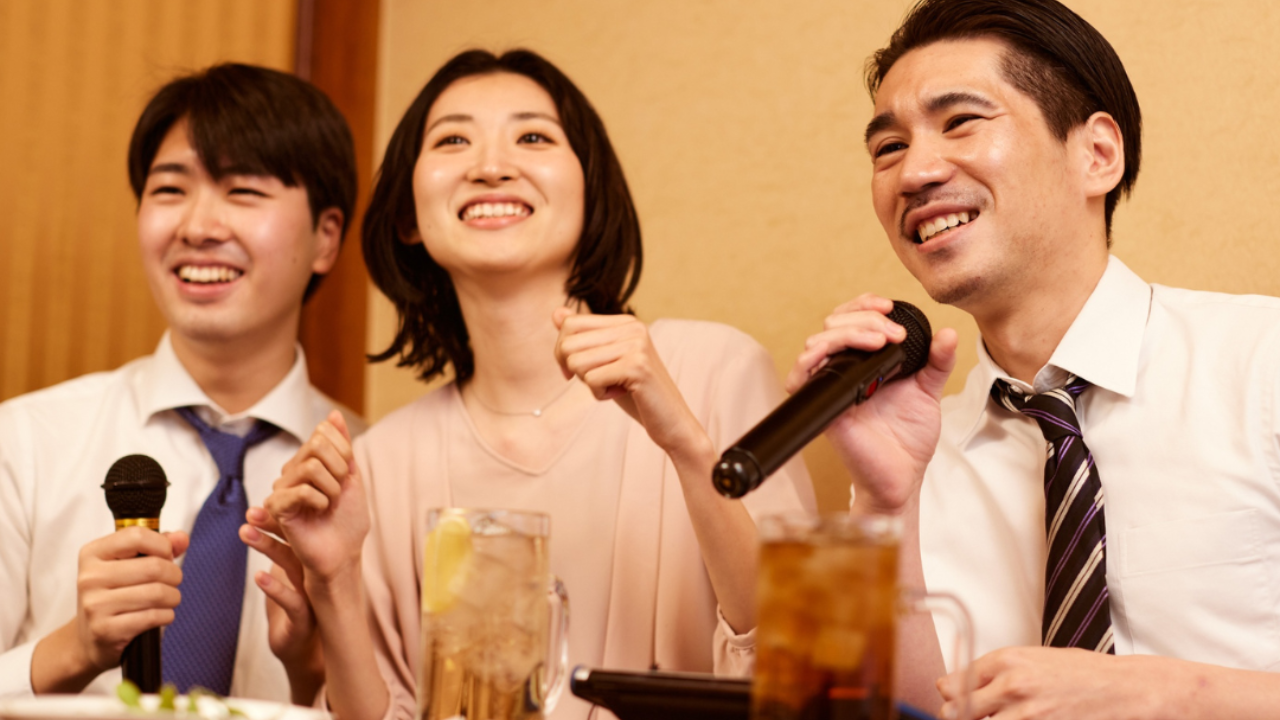The Origin of Karaoke: How Japan Created a Global Phenomenon
Mar 30, 2025
Karaoke is one of Japan’s most famous entertainment inventions. Today, it is a beloved activity worldwide, enjoyed in bars, private rooms, and even at home. But how was karaoke born, and who invented karaoke? Let’s dive into the origin of karaoke, explore its history, and understand why karaoke is popular in Japan.
What’s Karaoke?
Karaoke refers to music tracks that play without a lead singer, allowing anyone to step in and sing along. Japanese karaoke culture has made this activity more than just singing—it’s a fun and social experience shared with friends, family, or even strangers.
Origin of the Name
First things first—what does "karaoke" even mean?
The word “karaoke” (カラオケ) is a combination of two Japanese words:
kara (空), meaning “empty,”
and oke (オケ), which is short for “orchestra” (オーケストラ).
So, karaoke literally translates to “empty orchestra”.
The Birth of Karaoke: Who Invented It?
Karaoke’s origin can be traced back to Japan in the early 1970s. Daisuke Inoue, a musician and businessman, is often credited as the inventor of karaoke. In 1971, he built a machine that played instrumental versions of popular songs, allowing people to sing along. He rented these machines to bars in Kobe, Japan, where they quickly became a sensation.
Before Inoue’s invention, people in Japan enjoyed singing along to 伴奏テープ (accompaniment tapes), which were background tracks of popular songs. But Inoue’s machine added a microphone, an echo effect, and a coin slot to charge per song—creating the first true karaoke machine. It was affordable, easy to use, and fun, which helped it spread rapidly across the country.

井上大佑氏 (Daisuke Inoue)
The Growth of Karaoke in Japan
By 1973, karaoke had become a booming business. Companies began renting karaoke machines to bars, and by 1976, businesses like Teichiku, Clarion, and Victor Japan started selling karaoke tapes.
The 1980s brought a major breakthrough—video karaoke. Companies introduced laser disc (LD), compact disc (CD), and VHD formats, allowing people to see lyrics on a screen while singing. Pioneer launched the first professional karaoke system in 1982, followed by Victor Japan in 1983. By the late 1980s and early 1990s, video karaoke dominated 80% of the market.
Why the Japanese Love Karaoke
There are several reasons why karaoke is popular in Japan:
- A Social Activity – Karaoke is a fun way to spend time with friends, family, or colleagues.
- No Musical Skills Needed – Anyone can sing, no matter their talent level.
- Stress Relief – Singing is a great way to relax after work or school.
- Privacy & Confidence – Unlike live performances, karaoke offers a comfortable, judgment-free space.
The Rise of Karaoke Boxes in Japan

In the mid-1980s, karaoke in Japan changed again with the invention of karaoke boxes (カラオケボックス). The first karaoke box was created in Okayama Prefecture, where a businessman converted an old shipping container into a private karaoke room. This new concept allowed people to sing in private, making karaoke even more appealing.
Karaoke boxes quickly spread across Japan, offering:
- Private rooms for small groups
- Affordable hourly rates
- A comfortable setting with food and drinks
By the 1990s, karaoke boxes had become the standard way to enjoy karaoke in Japan, and they remain the most popular option today.
Where to Do Karaoke in Japan?

If you're visiting Japan and want to try karaoke, here are the best places to go:
1. Karaoke Boxes 🎤
The most popular way to enjoy karaoke in Japan. Big chains like Big Echo, Karaoke Kan, and JoySound offer private rooms where you can sing for hours.
2. Karaoke Bars 🍹
A Western-style experience where people sing in front of an audience. These are common in nightlife districts.
3. Themed Karaoke Rooms 🎭
Japan offers unique karaoke experiences, including:
- Anime-themed karaoke with special songs and decor
- Luxury VIP karaoke with high-end sound systems
- Cosplay karaoke, where you can dress up as your favorite characters
Karaoke Goes Global
As karaoke history progressed, it spread beyond Japan. In the United States and Europe, karaoke became popular in bars and clubs, where people sing on stage. In other parts of Asia, the karaoke box model became the norm, similar to Japan.
Today, technology has taken karaoke even further, with online platforms, smartphone apps, and even karaoke social media networks like DAM★tomo and Uta Suki. But no matter how it evolves, karaoke’s essence remains the same—bringing people together through music.
Despite the differences in how karaoke is enjoyed, its essence remains the same—bringing people together through music. I personally love going to karaoke!
That’s all for today about Karaoke 🎤 and if you want to know more about other Japanese inventions, read this article.
Your Sensei,
Hikari 👩🏻🏫
Join my ニュースレター Newsletter 📩
You can expect an email from me once a week about Japanese culture.
Don't worry, your information will not be shared.
We hate SPAM. We will never sell your information, for any reason.



